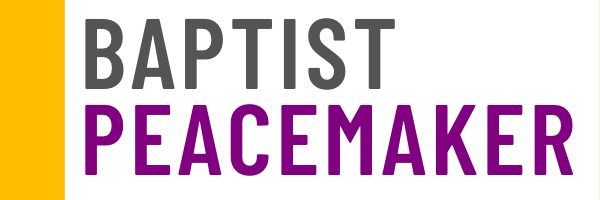Book Review: Body Becoming: A Path to our Liberation.
Robyn Henderson-Espinoza, Body Becoming: A Path to Our Liberation (Minneapolis, MN: Broadleaf Books, 2022), $27.99.
ISBN 978-1-5064-7357-4
This book is a personal memoir that speaks from places of vulnerability and pain while inviting others to join in movement and change. The volume is jam-packed with intimate personal stories and a commitment to the task of self and communal liberation. It is also narrated from the author's vulnerable and detailed social and emotional location.
Body Becoming is not about providing a specific map or set of guidelines on how to become. Henderson-Espinoza has not filled the pages with long and complex quotes of theoretical ideas. There is not a single, linear approach to liberation, embodiment, or becoming in these pages; the author does not seem to have intended to provide one. In this book, one does not encounter traditional academic writing that lumps together a range of citations to support one’s arguments. The brilliance of Henderson-Espinoza’s book stems from the way they can entangle some theoretical analyses with experience and personal vulnerability. In an almost “Anzaldúan” way of narrating, the author immerses the reader in their own personal and vulnerable experiences, speaking of their own process of Becoming. This is done through the four parts of the book engaging the author’s personal experience: Rupture, Becoming, Embodiment, and Repetition.
Becoming is related to change and assemblage. Drawing from Queer theory, the author argues that in singularity, assemblage retains particularity. Becoming refers to the change and movement within the assemblage. Not surprisingly, there is not a single definition of becoming. Instead, Henderson-Espinosa’ becoming emerges through movement and change (55-56). Similarly, one also does not find a single way of becoming because, according to the author, everybody is different; everyone moves differently.
As I see it, this fluidity in the description of becoming is quite clever. By not providing an unquestionable ready-made formula for becoming, Henderson-Espinosa leaves the door open to diverse processes of movement and change. In other words, they leave the door open for the possibilities of becomings. Henderson-Espinoza’s experiences narrated in the book serve as an example of how they are engulfed in their own processes of becoming; their experiences signal their own movements and changes. A crucial contribution is the idea that becoming does not emerge in a single unique, unquestionable manner but rather in continuous movement in specific contexts: everyone becomes in different ways.
Henderson-Espinoza is not proposing an individualizing process of becoming. Indeed, they argue that becoming includes personal and communal processes of embodiment. As individuals become a community, they also disrupt the capitalist, gender binaries social frameworks and continue to dismantle white supremacy. Drawing from their Latinx cultural background, Henderson-Espinosa claims that we move en conjunto. That is, the confluence of personal stories and journeys working together to build and exist in community.
Personal experience and vulnerability are at the center of the book. The reader is moved by the ways that Henderson-Espinosa discloses themselves to the reader while they retrace their own process of movement and change. For example, one is invited into their story as they speak about their uncomfortableness with their own body, their transitioning process through a beautiful narrative about their family ritual, and their background as a child growing up in a home with different cultures. There is a deep honesty in how Henderson-Espinosa speaks about their diagnosis as a neurodivergent person and their struggle (at first) and subsequent processing through it. These experiences are told from a vulnerable place that invites readers to explore their own vulnerable spaces and question their own social and body locations.
Through these personal stories, Henderson-Espinosa proposes a kind of self-reflection that will help us become as persons and as a community. By not providing a simple, specific path for how to do so, they also invite the readers to explore their own processes through vulnerability and honesty, challenging limited social norms and dominant culturally established ways of existing as human beings: gender binaries, whiteness, ableism, etc. As a result, the book itself acts as a catalyst that triggers processes of becoming, pushing for change and movement.
As a decolonial theology student, I value Henderson-Espinoza’s contribution to exploring my own, and my community’s in the process of becoming. I also appreciate how they use experience as a focal point, which is, to me, the most significant contribution of the book. While academia tends to lean more often into complex theory and methodology, Henderson-Espinoza uses their personal stories to appeal to their vulnerable experience as a path to self and communal liberation. This orientation toward personal stories becomes substantially valuable because it allows readers to engage in their own process of self-discovery, shattering normative notions of becoming and understanding their bodies in relation to others’ bodies.
While I celebrate Henderson-Espinoza’s drawing on experience to articulate their proposal, I also consider that the book could benefit from a clearer outline of the author’s theoretical argument. For example, while Gilles Deleuze and Félix Guattari are examined, missing is a more detailed explanation of how these two authors’ ideas contribute directly to Henderson-Espinoza’s proposal. This kind of detailing would allow for a deeper understanding of some of the ideas Henderson-Espinoza is putting forth through the discussion of their experiences. That said, the way vulnerability and movement are intertwined with becoming and embodiment goes a long way in provoking and inciting the readers to think beyond the normative ideas of what a body is and whose bodies matter. Henderson-Espinoza impacts readers as they narrate their own processes of becoming and, in so doing, invite others to join in. After all, as Henderson-Espinosa says, and I agree, we move en conjunto.
This review was previously published in Perspectivas, the journal for the Hispanic Theological Initiative, in Issue 19: 2022. It was edited by Dr. Néstor Medina.

